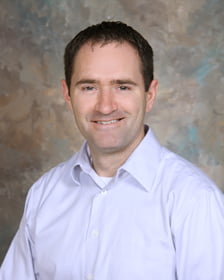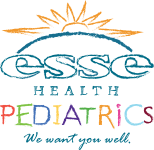 There are some dreaded phrases that no parent ever wishes to hear. Included on that list would be the phrase, “There has been an outbreak of lice at the school and the school nurse believes your child has it.” If such an event ever happens to you or your family, it is important to know that, while unpleasant, very effective treatments are available to eliminate them. Knowing the facts and myths associated with lice as well as what steps to take for treatment will help eliminate a case of lice and to prevent them from spreading to another person.
There are some dreaded phrases that no parent ever wishes to hear. Included on that list would be the phrase, “There has been an outbreak of lice at the school and the school nurse believes your child has it.” If such an event ever happens to you or your family, it is important to know that, while unpleasant, very effective treatments are available to eliminate them. Knowing the facts and myths associated with lice as well as what steps to take for treatment will help eliminate a case of lice and to prevent them from spreading to another person.
When a person is diagnosed with “head lice,” it means that they have an infestation with a small insect known as a head louse. This is a tiny grayish-white insect that can lay up to 7-10 eggs a day (called nits) that are then attached to the base of a hair, near the scalp. After about eight days, these nits hatch, releasing more lice. When a diagnosis of lice is made, it is important to remember that this is not a sign that a person is dirty or sick and that there are no serious or long-term health problems associated with lice.
Unfortunately, lice are extremely common. In one study, approximately 25% of grade school children had head lice in a given year. This is because lice can be easily spread from children when they play together or if they are sharing things like combs, headphones or towels. In addition, lice can spread in a classroom between articles of clothing that are kept on hooks next to each other. Fortunately, though, lice cannot jump or fly and cannot spread from person to person by attaching to pets.
To diagnose a case of lice, a very careful examination of the scalp and hair must be conducted. The easiest way to do this is by looking for the nits in the hair using a “nit comb.” This is done by placing the nit comb on the top of the head, touching the scalp. The comb is then pulled through the hair all the way to the end. The comb is then examined for evidence of nits or lice. Finding nits in the hair does not mean, though, that a person has an active infection. Since the nits can stay attached to the hair shaft for months after treatment, it is important to note how close to the scalp the nits are located. If nits are found within ¼ inch of the scalp, it is suggestive of an active infection. If a family is unsure of the diagnosis, a visit to the doctor for examination may be necessary.
It is important to remember that just because a person does not have any symptoms, it does not mean they may not have lice. Most people with lice have no symptoms. Some people will get mild itching of the scalp and neck caused by a reaction to lice saliva as they feed but the majority of people will have no symptoms.
The treatments available for lice include creams and liquids, combing and oral medications. If your child is over 2 years of age, an over-the-counter treatment such as permethrin (Nix®, Rid®) may be used. If a child is under two years of age, contact your doctor’s office for advice. There are also prescription creams and liquids that are used as well. Some of these require at least two treatments separated by 7-10 days. Your doctor’s office will be able to help you know which treatments will require this.
Some families with children under age two or families that want to avoid using insecticides may wish to treat with “wet combing.” This is a time-consuming process of careful and repeated hair combing using a nit comb. This needs to be repeated multiple times over a period of several weeks to be effective.
Finally, schools differ widely in policy regarding when a child with lice can return to the school. While some schools will not allow children to return to school until no nits are found, most experts agree that a child should be able to return after a single treatment with a proper insecticide. If there are any questions, a call to the school nurse should help a family follow school policy.
For more information, check out the Parent Resouces section of EsseHealth.com.
Dr. Matthew Dougherty is a board-certified pediatrician at Esse Health Tesson Ferry Pediatrics & Internal Medicine
13303 Tesson Ferry Road, Suite 150
St. Louis, MO 63128
Phone: 314-842-5239
Locations
Pediatric & Adolescent Medicine at Watson Road
9580 Watson Road, Suite A
St. Louis, MO 63126

